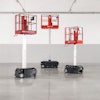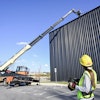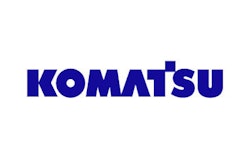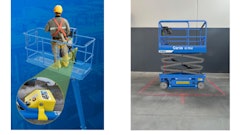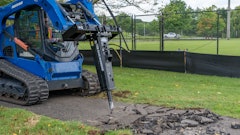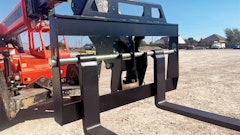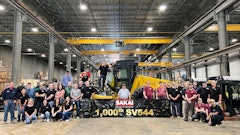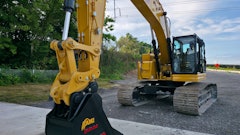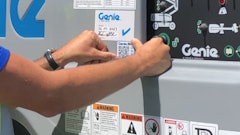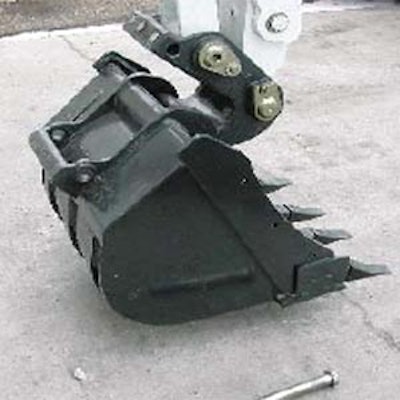
In the rental business, it's always best to be light on your feet when it comes to meeting customers' needs. Sometimes, however, it's tough to do that with limited resources. That's why, when you acquire new equipment, it's best to choose models that are versatile and can meet the needs of many.
One way to do this with your compact excavator fleet is to consider the attachment mounting system during the selection process. Mechanical pin-on systems are the tried and true, but many manufacturers today are offering standard quick couplers, a feature that speeds up the attachment process and which can increase the versatility of your compact excavator by allowing it to accept more makes and models of attachments.
"The pin-on style requires the operator to drive out the pins each time a different size bucket or attachment is needed," says Mike Conley, product manager, compact hydraulic excavators, Komatsu America Corp. "This method is very economical, but can be very labor intensive. A quick coupler vastly reduces the amount of time it takes to remove/install a work tool/attachment. This will increase the machine and operator productivity."
John Deere/Hitachi is one manufacturer which ships all its excavators with quick couplers as standard equipment, according to Mark Wall, product manager, compact excavators. Deere uses a wedge-style coupler that offers the advantage of having just one bolt to loosen in order to change attachments. "It's self adjusting as the wedge wears," says Wall. "You just tighten one bolt to tighten the bucket. The standard two-pin system is less expensive and more universal, but it's not as easy and quick to use."
Deere also offers auxiliary hydraulics as standard equipment on its compact excavators. "It's just another thing we did to respond to the customer's need for more versatility."
Recognizing that rental houses do not want to have to buy a whole new set of attachments each time they purchase a compact excavator, some manufacturers equip their machines with a quick coupler that can accept many makes of attachments.
"Komatsu's quick coupler allows the customer to use OEM buckets," says Conley. "This means that the customer does not need to purchase a set of buckets that match with the quick coupler."
Not only do quick couplers allow the use of different brands of attachments on one compact excavator, but some systems even allow for attachments to be used across machines. For example, Bobcat compact excavators come standard with the company's X-Change system which features a cast structure with no internal components, a simple "through-pin" attachment securing mechanism and a cast X-Change interface with integrated pin bosses on the attachment.
"Because some Bobcat attachments are interchangeable, they can be used for other attachment carriers, like skid steer loaders, loader-backhoes and mini track loaders," says Tom Connor, Bobcat excavator product specialist. "This keeps the attachment utilization rates higher and makes the rental store more profitable."
Cutting to the quick
As mentioned, there are standard pin-on attachment mounting systems and there are quick couplers, but the choices don't end there. According to Kendall Aldridge, national sales manager with IHI Compact Excavator Sales, there are different types of quick couplers, each with its own advantages and disadvantages. Some, like Bobcat, use a proprietary design that is theirs alone. Others, such as IHI, employ a mechanical system that utilizes a spring-loaded pin. "It's an inexpensive way to make our machines more versatile," says Aldridge. "It's a good complement to 2.5- to 3.5-metric ton machines. Our quick coupler fits five machines in our line and allows us to use the same buckets on all five machines."
Still other manufacturers equip their machines with a hydraulic quick coupler that is operated from inside the cab, while some use the Wain-Roy style coupler.
"The quick-tach has become so popular for rental stores and independent dealers because you can have different sized buckets for each machine," Aldridge says. "With a quick coupler, you can use a variety of buckets on each machine."
Aldridge notes that quick couplers can also be fitted with adapter plates to allow the use of an even greater variety of attachments.
It's a matter of time
Changing an attachment on a compact excavator can take time and often, it's time a rental business does not have. If a customer comes in to rent a compact excavator with a hydraulic hammer, he or she does not want to wait a half hour or more while you take off the bucket and install the hammer.
"Rental houses can quickly adapt their compact excavators and attachment needs for the customer," says Connor at Bobcat. "With the X-Change mounting system, the rental house can change a bucket in a few minutes to accommodate the customer's needs. Without X-Change, a customer could wait as long as 30 minutes for the attachment switch.
According to Connor, the X-Change system allows attachments to be changed in as little as 10 minutes. This also bodes well for customers who rent a machine with one or more attachments to go.
"With the dramatic reduction in time to change attachments, it encourages the operator to use the correct attachment for a specific operation," says Connor. "It makes the decision much easier — to change the bucket in a matter of minutes and do the right job instead of trying to use a wrong-sized bucket for a specific application."
Bridging the gap
Unlike skid steers, which use a universal attachment mounting system, there is no such standardization with compact excavators. Aldridge at IHI predicts this might change, however.
"When Bobcat introduced skid steers and then its quick-tach system, they had a patent," he explains. "Everyone had to use a different quick coupler, but then the patent ran out and now everyone has [the same coupler]. It's only a matter of time in the excavator market. At some point in the future, we'll likely see a universal system for compact excavators."


